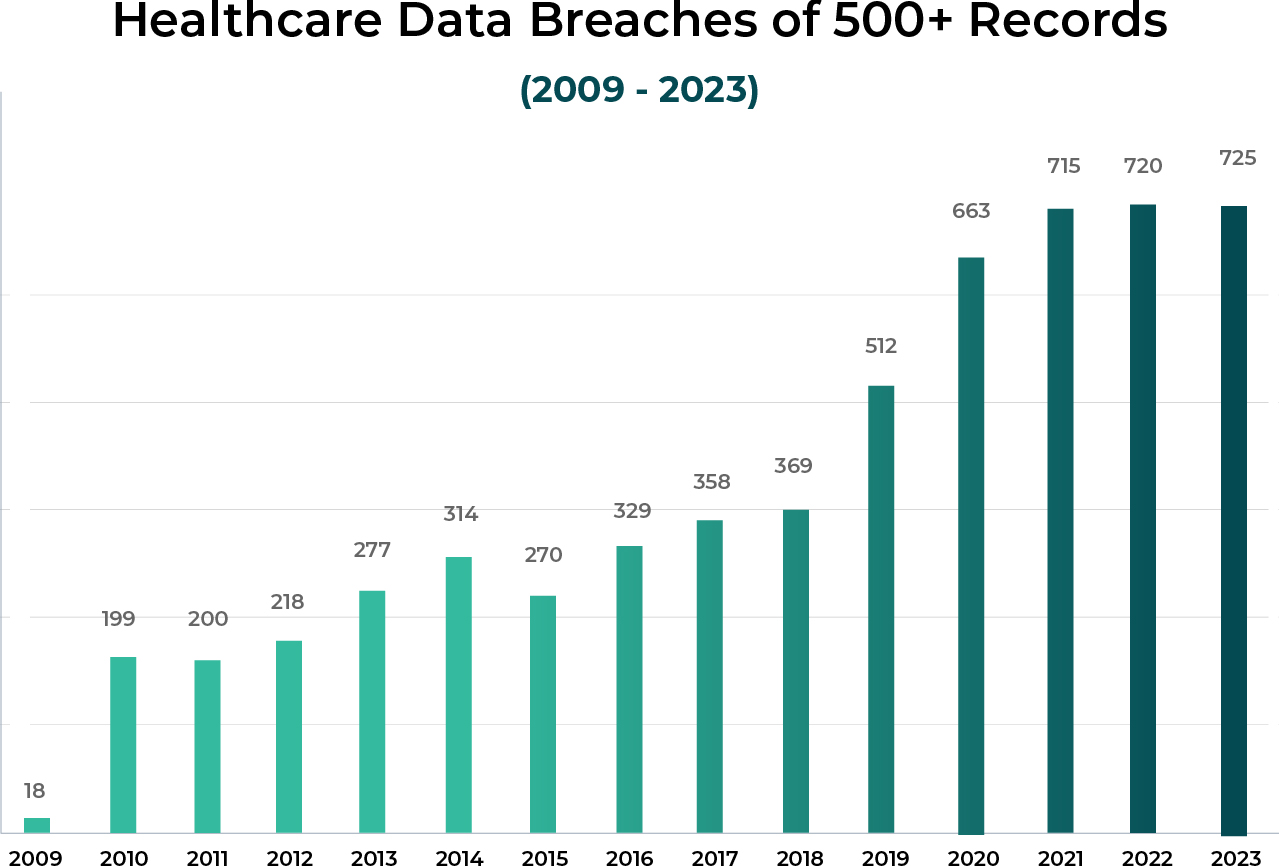 Become a Partner
Already a partner ? Login
Become a Partner
Already a partner ? Login
Program
Partner Program Overview
Designed to deliver unparalleled customer value and accelerated mutual growth by harnessing partner expertise and ColorTokens cybersecurity technology.
Learn MoreInfrastructure
Quick Links
Case Study
Industry Solutions
Quick Links
Program
Designed to deliver unparalleled customer value and accelerated mutual growth by harnessing partner expertise and ColorTokens cybersecurity technology.
Learn MoreFeatured Topic
Newsletter
In recent years, the healthcare industry has increasingly become a prime target for cyber
threats due to the vast amounts of sensitive patient data it holds. As per The HIPAA
Journal, below are some statistics of healthcare data breaches:



The escalating threat of cyber-attacks on US hospitals has prompted the White House to
propose a ground-breaking initiative that ties federal funding to stringent cybersecurity
standards. In the wake of a surge in cybercrimes targeting healthcare institutions, the
Centers for Medicare and Medicaid Services (CMS), a branch of the Department of Health
and Human Services, is reportedly drawing up rules connecting hospital IT security with
funding. The proposed regulations, expected to take effect by year-end, emphasize key
cybersecurity practices deemed impactful, with federal funding contingent on hospitals
implementing these defenses. The move aligns with the Department of Health and
Human Services’ cybersecurity strategy which advocates for new, enforceable security
standards and collaboration with Congress to provide financial support and incentives for
implementing high-impact cybersecurity practices. In response to the rising ransomware
incidents, including the compromise of patient data, the initiative seeks to enhance
accountability and coordination within the healthcare sector. Last year witnessed a
staggering increase in attacks, with 46 hospital corporations and 141 facilities falling
victim, prompting urgent action to safeguard sensitive patient information from
cybercriminals resorting to increasingly malicious tactics.
As a result, stringent cybersecurity standards have been established to safeguard this
critical information. Federal regulations, such as the Health Insurance Portability and
Accountability Act (HIPAA), mandate robust cybersecurity measures to protect sensitive
patient data. Meeting these standards is crucial for hospitals seeking federal funding for
various programs and initiatives.
One powerful tool in the fight against cyber threats is Microsegmentation, a security
technique that involves dividing a network into smaller, isolated segments to enhance
security and control over network traffic. Unlike traditional network segmentation, which
operates at a broader level, microsegmentation provides granular control down to
individual devices or workloads. Each segment is then protected by its own set of security
policies and controls, significantly reducing the risk of lateral movement by cyber
attackers within the network.
The healthcare industry faces unique cybersecurity challenges due to the sensitivity and
value of the data it handles. Electronic Health Records (EHRs), medical histories and
personally identifiable information (PII) are highly sought after by cybercriminals for
various malicious purposes, including identity theft and financial fraud. Moreover, the
proliferation of connected medical devices and IoT in healthcare facilities further expands
the attack surface, making it increasingly challenging to defend against cyber threats.
Microsegmentation offers several key benefits that address the specific cybersecurity
needs of the healthcare industry:
Microsegmentation is not just a security best practice but a strategic investment for hospitals seeking to enhance patient care, protect sensitive data, and ensure compliance with federal regulations. By implementing microsegmentation, healthcare organizations can bolster their cybersecurity posture, mitigate risks, and demonstrate compliance with regulatory requirements. Moreover, adherence to these standards is imperative for accessing federal funding and grants, highlighting the significance of microsegmentation in safeguarding the integrity and confidentiality of healthcare data. As cyber threats continue to evolve, embracing advanced security measures like microsegmentation is paramount to safeguarding the future of healthcare delivery. However, implementing segmentation using traditional tools is highly complicated and challenging.
ColorTokens Xshield™ provides the software tools, and implementation services to allow a timely, cost-effective microsegmentation implementation project. ColorTokens’ innovative approach streamlines the process, enabling hospitals to deploy microsegmentation swiftly and efficiently, thereby fortifying their defenses and ensuring the security of patient data and critical infrastructure.
ColorTokens is the definitive solution empowering healthcare organizations to uphold their cybersecurity standards and safeguard crucial federal funds – ensuring a resilient defense against evolving threats in the digital age!
Top healthcare providers trust ColorTokens for their protection. Reach out to explore how we can do the same for you.
By submitting this form, you agree to ColorTokens
Terms of Service and
Privacy Policy